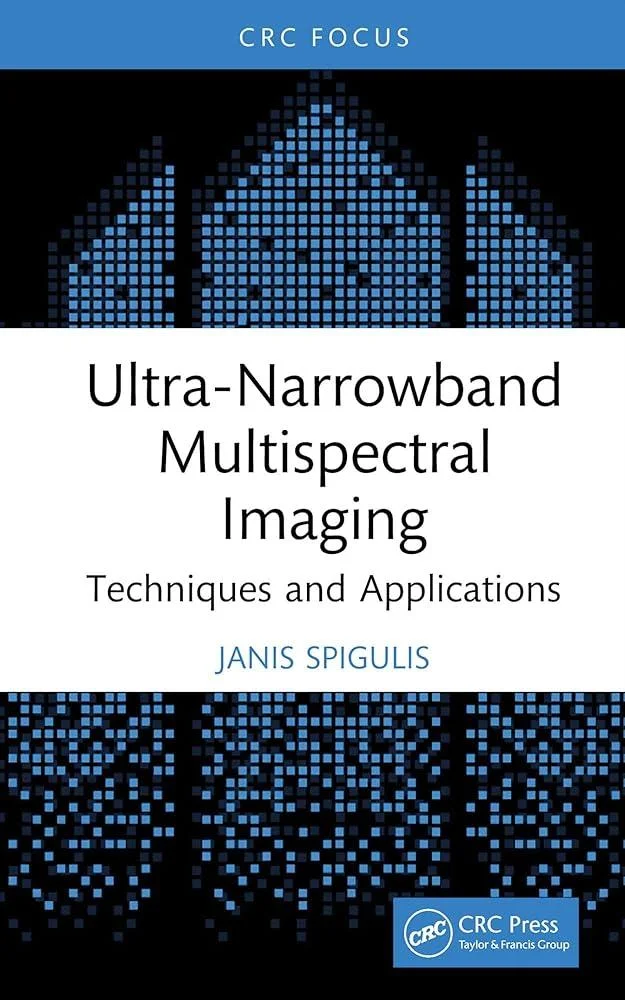
Ultra-Narrowband Multispectral Imaging : Techniques and Applications
(Author) Janis SpigulisThis book provides insight into an unconventional modality of imaging where several spectral images are captured by a single snapshot under multi-laser illumination, ensuring high-speed imaging within extremely narrow spectral bands. This method has three distinct advantages, if compared to common commercial multispectral imaging systems - considerably improved spectral selectivity (or colour sensitivity) of imaging, avoided motion artefacts in the spectral image sets, and simpler/faster image processing as integrals over the spectral bands of imaging are replaced by numbers of the fixed working wavelengths. The basic principles and progress in this field are reviewed, focusing on applications for human skin diagnostics and printed forgery detection. The designs of ten different lab-developed prototypes that implement this method are described, along with results of their laboratory, clinical and/or forensic tests. This research leads to the development of new equipment and protocols for better skin diagnostics and the advanced detection of money, document, and artwork forgeries. Chapter 1 explains the basics of spectral imaging, including the main principles of multispectral and hyperspectral imaging. Chapter 2 introduces the snapshot multi-spectral-line imaging (SMSLI) method, focusing on lasers as multi-wavelength illumination sources. Chapter 3 describes multi-laser illumination designs while Chapter 4 presents main specifications of the lab-assembled prototype devices implementing such designs. Results of the test measurements confirming applicability of the developed solutions for analysis/mapping of colour pigments in clinical diagnostics and forgery detection are discussed in Chapters 5 and 6, respectively. This will be a valuable reference for laser and imaging professionals, photonics researchers and engineers, clinicians (dermatologists, plastic surgeons, oncologists), forensic experts, and students of physics, chemistry, biology, medicine, and engineering. Key Features: - Reviews techniques and applications of narrowband spectral imaging using multi-laser illumination. - Presents ten different prototypes for implementing the multi-spectral-line imaging method. - Discusses applications of spectral line imaging for human skin diagnostics and forgery detection. Janis Spigulis graduated as physicist from the University of Latvia (UL) in 1973. He defended his Ph.D. thesis on the collisional energy transfer in metal vapor mixtures in 1979 and obtained the Dr.Habil.Phys. degree in 1993 for research on fiber optics and optoelectronics. In 1997 Spigulis established and still leads the Biophotonics Laboratory at Institute of Atomic Physics and Spectroscopy, UL; over the period 2004-2012 he was director of this institute. He has been promoted as Professor (1998), Fellow of SPIE (2011) and academician of Latvian Academy of Sciences (LAS, 2012), recipient of the Grand Medal of LAS (2021). Recent work of Prof. Spigulis aims at developing novel non-invasive optical methods and devices for applications in healthcare and other areas. He has supervised 40 research projects with results published in >200 scientific papers and protected by >30 patents. Prof. Spigulis has been invited as keynote lecturer, committee member or session chairman at tens of international conferences.
Janis Spigulis
Janis Spigulis was a Latvian poet known for his collection "Songs of the Sea." His lyrical style and vivid imagery captured the essence of the sea and its eternal mysteries. Spigulis' works explored themes of love, nature, and the human experience, leaving a lasting impact on Latvian literature.




